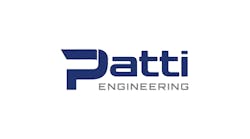There is so much material available on this topic that its nearly impossible to go into great depth for the entries cited here. Its like a throwback to the 1950s when this country was obsessed with preparing for a nuclear attack. Only the names have changed.
When an emergency visits itself upon your plant, youre not going to have any time to research the appropriate responses. And youre not going to be able to count on the government to take care of you. Self-reliance is the idea behind this column. If youre going to get serious about preparation, you better do it now while theres still enough power coming out of the wall to operate your computer. When the disaster hits, you might as well think in terms of living in the Stone Age. Thats why Im inviting you to join me for another dive into the morass we call the Web in search of practical, zero-cost, noncommercial, registration-free Web resources that can help keep you and yours safe when things get a bit sticky. Remember, we search the Web so you don't have to.
Web Radio
HomelandDefenseRadio.com, Arlington, Va., is a Web site that features both online articles and Web audio reports that relate to homeland security. Topics covered include high-tech hardware, legislation, protecting the physical infrastructure, transportation security and more. The audio format uses a 30-minute cycle similar to that used by commercial all-news radio stations. The material it posts is for those having serious concerns about national security. Just try to sneak your stealthy ol mouse over to this site and see what turns up.
The Intact Shell
Your first line of defense against airborne catastrophe is the building in which youre sitting. Keeping that shell intact and impervious isolates the interior from the outside nastiness. Our friends in the U.S. Army have a lot of experience defending buildings from biological or chemical attack, and theyre willing to share what they know with civilians. Enlist your mouse to go to Basic Information On Building Protection by the Technical Assistance Team. This group is part of the Homeland Defense Business Unit, Engineering Directorate, U.S. Army Edgewood Chemical Biological Center, Aberdeen Proving Ground in Maryland. The sites primary focus is on HVAC issues such as internal and external air filtration, pressurization and generally keeping the air fit for human consumption. Its light on details because such matters are so facility-specific. Nevertheless, the Technical Assistance Team can provide non-military facilities with assessments, certification, testing, design support, failure analysis and operating and maintenance manuals for their building protection systems.
Breathe Deeply
When it comes to identifying the true staff of life, Id vote that one could go without bread-induced carbo-loading for a lot longer than without air. If youre going to breathe, you might as well take in clean air. And our hired hands in Washington are ready, willing and able to help you. This time its the National Institute for Occupational Safety and Health that positioned itself to tell you everything you need to know about respirators. The information youll find includes applicable standards, selection guides and a downloadable pocket guide to hazardous materials.
Help Is On the Way
For the most part, the only bad injuries we see in this country are caused by vehicle accidents and industrial mishaps. When victims need help, it should be available immediately. In many cases, its not, which is a shame. The general populace simply isnt prepared for every eventuality. We should tip our hats to the nations First Responders, the only people who provide help in an emergency at a moments notice. You can get a glimpse of the training these volunteers undergo by reviewing the material in First Responder: National Standard Curriculum, which is found on the site operated by the United States Department of Transportations National Highway Traffic Safety Administration. This 342-page document highlights the skills one needs to provide emergency medical care with a limited amount of equipment. It enables people to recognize the seriousness of the patient's condition or extent of injuries, assess requirements for emergency medical care and administer appropriate care for life-threatening injuries relative to airway, breathing and circulation. Knowledge of this type of first aid should be mandatory for every citizen.
First Aid
Its impossible to repair plant machinery if you dont have the right people, parts, tools and supplies at hand simultaneously. Similarly, you cant repair bodies without a supply of appropriate skill and materiel. Although plants may have standard first aid kits, they may not be suitable for the disasters under consideration here.
Wilderness Medical Associates, Bryant Pond, Maine offers online tips for handling medical emergencies in the wild and under extreme conditions. First-Aid Kits includes a recommended list of items for your first aid kit. Our friends at the Mayo Clinic stand ready to help broken bodies, too. If you go to First-Aid Guide, your reward will be a long list of possible emergencies that can arise, each of which is linked to a page of treatments and other actions one should take. The emergencies range from heart attack and spinal injury to something as benign as a black eye. But these are soft-core problems.
As far as responses to more serious emergencies are concerned, you cant go wrong with a visit to Virtual Naval Hostpital to read a textbook for the standard first aid course offered by our Navys Bureau of Medicine and Surgery. In its dozen chapters and appendix, youll learn more than you wanted to know about treating a variety of maladies, and youll gain some practical skills.
The Portal Approach
The research for this column uncovered a huge site dedicated to crime and the elimination thereof. This prodigious effort, Criminal Justice Resources, is the handiwork of Jon Harrison, a criminal justice specialist and social sciences collections coordinator at Michigan State University. The topic is of a grand scale and Harrison has managed to find a suitable nook or cranny for every relevant facet you can imagine. Cutting to the chase, however, I direct your digital attention to one small part of the work. Shoot your mouse over here and youll find at least 200 links to the content he calls Terrorism Groups and Related Issues. These links, some of which are portals in their own right, cover a lot of territory. Id suggest you scan the offering for something that you might find interesting.
A Study in Disaster
Four year ago, the Centers for Disease Control and Prevention in Atlanta provided funding to start the Institute for Bioterrorism at the Saint Louis University School of Public Health. This organizations web site is a good resource for information on chemical, radiological and nuclear terrorism, as well as a place to learn something about smallpox, anthrax, botulism and plague. Clicking on In Case Of Emergency brings you guidance about what to do with suspicious mail. If you have any first responders on staff, this page also lists the phone number for the chemical and biological hotline, the contact point mandated by the Nunn-Lugar-Domenici legislation.
Self-study
For those of you with an interest in learning how to deal with disaster, Id recommend Emergency Response to Terrorism: Self-Study, a course developed by the Federal Emergency Management Agency. The 103-page study guide is designed for fire personnel, emergency medical service responders and hazardous materials responders, any of whom can find themselves being cast into the role of first responder when arriving at the scene. This is heavy material.
The Great Escape
Know how to respond when it becomes painfully obvious that you and everyone else in the plant better get out of Dodge, pronto. Every facility, plant and office ought to have a well-rehearsed and documented plan for moving employees to safe quarters if something nasty occurs. Your plan should conform to 29 CFR 1910.38 -- Emergency Action Plans.
If anyone should know about such things, its the administrators in the great city of New York. The citys Department of Health and Mental Hygiene and the Office of Emergency Management prepared a 24-page document, Emergency and Evacuation Planning -- A Resource Guide for Employers, that might assist you in developing your own workplace emergency and evacuation plans. The guides eight chapters and two appendices provide the resources you should know about before you delve into an escape strategy.
Follow that with a visit to the Emergency Evacuation Checklist, published by the American Federation of State, County and Municipal Employees. Dont forget to follow the link at the bottom of the page to access the organizations guide to emergency planning.
Finally, investigate Best Practices in Workplace Security, the report from the South Carolina Governors workplace security advisory committee. This purpose of the 68-page document at www.llr.state.sc.us/workplace/Full%20Report.pdf [no hyphens] is to help develop and disseminate checklists of best practices for employers in preventing and responding to terrorist activity or sabotage.
OSHA
Plant safety isnt simply about unprovoked mayhem. Some safety problems might affect only one person, but the plant is still on the governmental hook. Because ignorance of the law isnt recognized as being a good excuse, the Occupational Safety and Health Administration at the U.S. Department of Labor posted to your favorite web the entire contents of 29CFR 1910, Occupational Safety and Health Standards. Overall, 1910 and its myriad subparts pretty well covers work surfaces, exits, protective gear, chemical storage and any of the other mischief youre going to get into during normal industrial operations. Its the law of the land, so you might want to bookmark the page for future reference.
Bringing It All Back Home
If and when we experience some mass emergency, its only natural that ones thoughts drift to concern about the home front and family. Peace of mind comes from knowing that every family member is prepared for trouble and knows what to do when the red alert is sounding. To get you and yours started, you might want to follow some of the recommendations in Personal Preparedness Guide, part of the Washington Post site. It starts out with general information and gets more thorough in its coverage as you move down the menu. Much of the material at the bottom, such as contact information for government agencies and schools, is specific to the Washington area. You can use that info as a model to develop a similar listing for your hometown. Pull down some of the material and involve your loved ones in formulating your mutual security measures.



